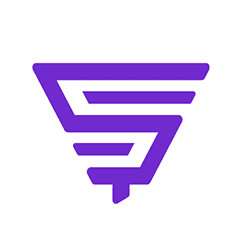It's no secret that hiring much less hiring quality talent has its challenges. These challenges increase exponentially when it's time to fill a large number of positions in a short period of time.
Although the average job post sees 59 applicants, a high-volume role typically receives upwards of 250 applications. Needless to say, that's a lot to sift through if you're doing it manually anyway. In order to fill that need efficiently, you need to optimize your high-volume hiring. The ultimate goal? To maximize time, improve outcomes and attract, engage and secure the right talent.
To meet their high-volume hiring needs, companies like Amazon have looked to in-person job fairs. However, the company knows modern-minded ingenuity is also required. In recent years, Amazon has enlisted CamperForce, a tool to promote seasonal jobs among transient RVers (campers) in a variety of locations, based on availability.
Beyond catchy campaigns, however, scalable recruitment marketing strategies powered by digital tech are the way to go Ñ today and moving forward. After all, success is perfectly in reach with the right talent acquisition tools on your side.
Technology is Your Friend
Effective sourcing is critical to winning at high-volume hiring. Using artificial intelligence in your recruitment process lets machines learn your hiring needs. That frees up your TA team so they can address meaningful matters like the work of relationship building.
You can also enlist an easy apply process, such as check-out style or text to apply, so candidates aren't daunted and so they don't abandon the application process before seeing it through. From there, an applicant tracking system (ATS) can automate the process, saving more time, building a talent pool and offering the kind of personalized experience job-seekers have come to expect.
Once qualified candidates are entered into the funnel, candidate relationship management (CRM) tools use automation to ensure candidates are placed in a drip campaign. Why is this important? Automation pre-screens applicants, eliminating the large volume of unqualified candidates before they ever come into play. That's key because upwards of 88 percent of resumes received for an open position are unqualified.
By using a series of automated communication tools (like email, SMS, and messaging apps), a drip campaign:
- Sends candidates content about a job over time.
- Sends candidates relevant information at regular intervals based on specific interests or needs, based on their online history.
- Nurtures candidates through the talent journey.
To create a seamless application, nurturing and hiring process across all touchpoints, it's important to have everything together in a single, unified dashboard. Disjointed systems can end up being a black hole, causing you to lose or overlook valuable data. But don't be alarmed if your systems are currently disjointed - it's possible to transform your existing ATS into something more powerful. Whether you use Workday, Taleo, Kenexa, Infor or another platform, you can use a technology overlay to pull everything together into a single dashboard.
Front-End Strategy is Key
High-volume recruiting takes time time your HR team could put to better use. With manual screening and shortlisting requiring up to 23 hours per position, per recruiter, automation not only makes sense it's an essential tool in your HR arsenal.



